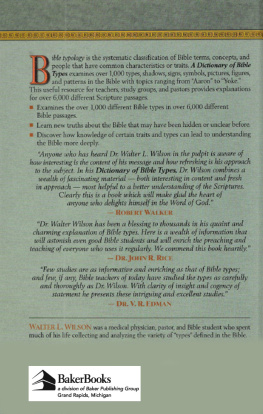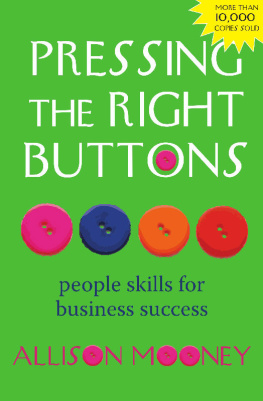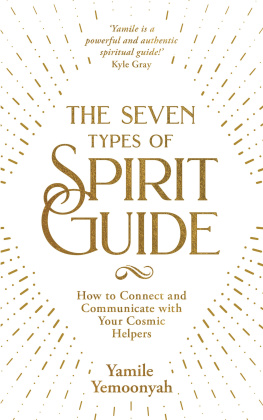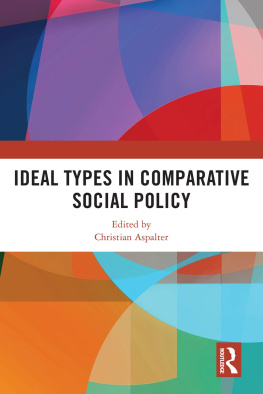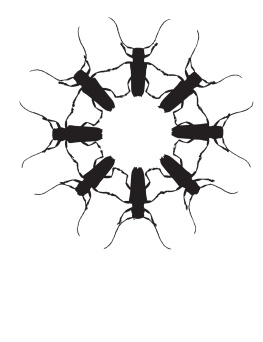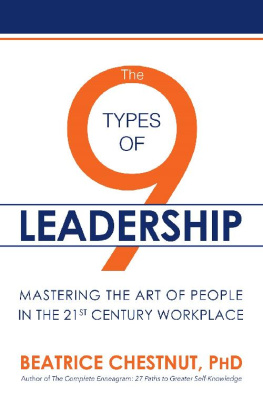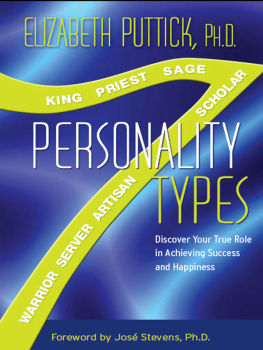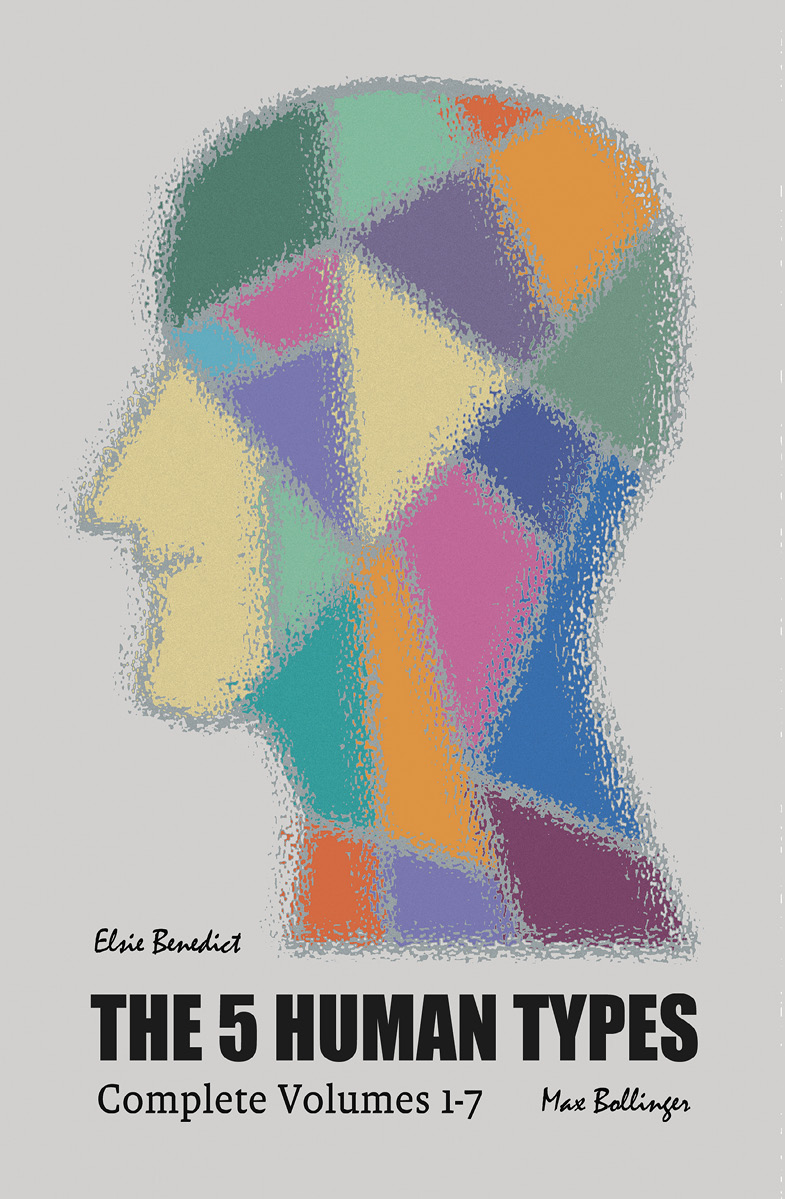
Elsie Benedict
the 5 Human Types
Volumes 1-7
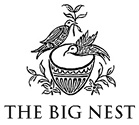
THE BIG NEST
LONDON NEW YORK TORONTO SAO PAULO MOSCOW
PARIS MADRID BERLIN ROME MEXICO CITY MUMBAI SEOUL DOHA
TOKYO SYDNEY CAPE TOWN AUCKLAND BEIJING
New Edition
Published by The Big Nest
sales@thebignest.co.uk
www.thebignest.co.uk
This Edition first published in 2016
Copyright 2016 The Big Nest
All Rights Reserved.
Contents

Its not how much you know
but what you can DO that counts

Human AnalysisThe X-Ray
Modern science has proved that the fundamental traits of every individual are indelibly stamped in the shape of his body, head, face and handsan X-ray by which you can read the characteristics of any person on sight.
he most essential thing in the world to any individual is to understand himself. The next is to understand the other fellow. For life is largely a problem of running your own car as it was built to be run, plus getting along with the other drivers on the highway.
From this book you are going to learn which type of car you are and the main reasons why you have not been getting the maximum of service out of yourself.
Also you are going to learn the makes of other human cars, and how to get the maximum of co-operation out of them. This co-operation is vital to happiness and success. We come in contact with our fellowman in all the activities of our lives and what we get out of life depends, to an astounding degree, on our relations with him.
Reaction to Environment
The greatest problem facing any organism is successful reaction to its environment. Environment, speaking scientifically, is the sum total of your experiences. In plain United States, this means fitting vocationally, socially and maritally into the place where you are.
If you dont fit you must move or change your environment to fit you. If you cant change the environment and you wont move you will become a failure, just as tropical plants fail when transplanted to the Nevada desert.
Learn From the Sagebrush
But there is something that grows and keeps on growing in the Nevada desertthe sagebrush. It couldnt move away and it couldnt change its waterless environment, so it did what you and I must do if we expect to succeed. It adapted itself to its environment, and there it stands, each little stalwart shrub a reminder of what even a plant can do when it tries!
Moving Wont Help Much
Human life faces the same alternatives that confront all other forms of lifeof adapting itself to the conditions under which it must live or becoming extinct. You have an advantage over the sagebrush in that you can move from your city or state or country to another, but after all that is not much of an advantage. For though you may improve your situation slightly you will still find that in any civilized country the main elements of your problem are the same.
Understand Yourself and Others
So long as you live in a civilized or thickly populated community you will still need to understand your own nature and the natures of other people. No matter what you desire of life, other peoples aims, ambitions and activities constitute vital obstructions along your pathway. You will never get far without the co-operation, confidence and comradeship of other men and women.
Primitive Problems
It was not always so. And its recentness in human history may account for some of our blindness to this great fact.
In primitive times people saw each other rarely and had much less to do with each other. The human element was then not the chief problem. Their environmental problems had to do with such things as the elements, violent storms, extremes of heat and cold, darkness, the ever-present menace of wild beasts whose flesh was their food, yet who would eat them first unless they were quick in brain and body.
Civilizations Changes
But all that is changed. Man has subjugated all other creatures and now walks the earth its supreme sovereign. He has discovered and invented and builded until now we live in skyscrapers, talk around the world without wires and by pressing a button turn darkness into daylight.
Causes of Failure
Yet with all our knowledge of the outside world ninety-nine lives out of every hundred are comparative failures.
The reason is plain to every scientific investigator. We have failed to study ourselves in relation to the great environmental problem of today. The stage-setting has been changed but not the play. The game is the same old gameyou must adjust and adapt yourself to your environment or it will destroy you.
Mastering His Own Environment
The cities of today look different from the jungles of our ancestors and we imagine that because the brain of man overcame the old menaces no new ones have arisen to take their place. We no longer fear extermination from cold. We turn on the heat. We are not afraid of the vast oceans which held our primitive forebears in thrall, but pass swiftly, safely and luxuriously over their surfaces. And soon we shall be breakfasting in New York and dining the same evening in San Francisco!
Facing New Enemies
But in building up this stupendous superstructure of modern civilization man has brought into being a society so intricate and complex that he now faces the new environmental problem of human relationships.
The Modern Spiders Web
Today we depend for lifes necessities almost wholly upon the activities of others. The work of thousands of human hands and thousands of human brains lies back of every meal you eat, every journey you take, every book you read, every bed in which you sleep, every telephone conversation, every telegram you receive, every garment you wear.
And this fellowman of ours has multiplied, since that dim distant dawn, into almost two billion human beings, with at least one billion of them after the very things you want, and not a tenth enough to go around!
Adapt or Die
Who will win? Nature answers for you. She has said with awful and inexorable finality that, whether you are a blade of grass on the Nevada desert or a man in the streets of London, you can win only as you adapt yourself to your environment. Today our environmental problem consists largely of the other fellow. Only those who learn to adapt themselves to their fellows can win great or lasting rewards.
Externals Indicate Internal Nature
To do this it is necessary to better understand our neighborsto recognize that people differ from each other in their likes and dislikes, traits, talents, tendencies and capabilities. The combination of these makes each individuals nature. It is not difficult to understand others for with each group of these traits there always goes its corresponding physical makeupthe externals whereby the internal is invariably indicated. This is true of every species on the globe and of every subdivision within each species.
Significance of Size, Shape and Structure
All dogs belong to the same species but there is a great difference between the nature of a St. Bernard and that of a terrier, just as there is a decided difference between the natures of different human beings. But in both instances the actions, reactions and habits of each can be accurately anticipated on sight by the shape, size and structure of the two creatures.



